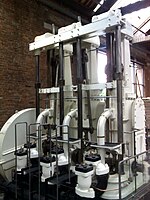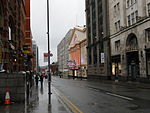Heart North West
Adult contemporary radio stations in the United KingdomHeart (radio network) stationsMass media in SalfordRadio stations established in 1998Radio stations in Lancashire ... and 1 more
Radio stations in Manchester

Heart North West is a regional radio station owned and operated by Global as part of the Heart network. It broadcasts to North West England from studios in the Spinningfields area of Manchester city centre.
Excerpt from the Wikipedia article Heart North West (License: CC BY-SA 3.0, Authors, Images).Heart North West
Hardman Boulevard, Manchester City Centre
Geographical coordinates (GPS) Address Nearby Places Show on map
Geographical coordinates (GPS)
| Latitude | Longitude |
|---|---|
| N 53.480543 ° | E -2.253398 ° |
Address
XYZ
Hardman Boulevard 2
M3 3AQ Manchester, City Centre
England, United Kingdom
Open on Google Maps










